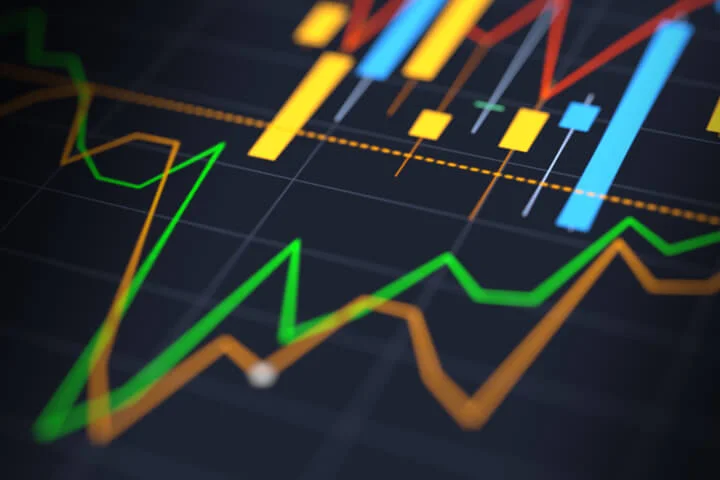
In the ever-shifting landscape of global finance and politics, the recent decisions and statements made by former President Donald Trump have sent ripples through the market, prompting investors and analysts alike to reassess their strategies. Trump’s influence on the economy is profound, and his recent actions, characterized as a “step back,” have raised questions about the future trajectory of both the market and the broader economic environment.
Understanding the Context
To grasp the implications of Trump’s latest moves, it is imperative to understand the context in which they occur. Following his presidency, the U.S. economy experienced significant fluctuations, driven by various factors, including the COVID-19 pandemic, changing trade policies, and shifting consumer behavior. Trump’s administration was marked by aggressive deregulation, tax cuts, and a focus on American manufacturing, which initially spurred economic growth but also led to increased national debt and trade tensions with other countries.
However, the recent political climate, characterized by heightened polarization and uncertainty, has led to a reevaluation of economic policies. Trump’s re-emergence in the political arena, along with his controversial statements, has raised concerns among investors about potential market volatility and instability.
Market Reactions: A Mixed Bag
The immediate market reactions following Trump’s recent statements have been mixed. On one hand, certain sectors, particularly those tied to his policies during his presidency—such as energy and manufacturing—experienced temporary boosts. Investors who are optimistic about a potential second Trump presidency may have seen a buying opportunity, expecting a return to pro-business policies.
Conversely, uncertainty has loomed large over the market. The specter of Trump’s “step back” has created a sense of apprehension among investors who worry about the potential for increased volatility. The markets thrive on predictability, and any hint of uncertainty can lead to rapid shifts in investor sentiment. For instance, the stock market may react negatively to news of political discord, regulatory changes, or shifts in trade agreements, all of which Trump has a history of influencing.
Investor Sentiment: Balancing Optimism and Caution
As analysts sift through the implications of Trump’s step back, investor sentiment remains cautiously optimistic yet wary. Many investors recall the market highs achieved during Trump’s presidency, driven by tax reforms and deregulation. However, the lessons learned from the latter part of his term, which were marked by increasing national debt and geopolitical challenges, have instilled a more cautious approach.
Institutional investors, in particular, are likely to adopt a strategy that balances risk and reward. They may look to hedge against potential downturns while capitalizing on sectors that could benefit from Trump’s policies. For instance, the energy sector, especially fossil fuels, may see renewed interest as Trump’s rhetoric often leans towards deregulation in this area.
The Long-Term Outlook: What Lies Ahead?
Looking further ahead, the long-term outlook for the market following Trump’s step back hinges on several factors. One crucial element is the political landscape leading up to the next presidential election. If Trump were to regain prominence and support, it could lead to a re-implementation of policies that favor economic growth, albeit with certain risks associated with unpredictability.
Moreover, the ongoing impacts of the COVID-19 pandemic continue to shape economic conditions. Supply chain disruptions, labor shortages, and inflation are persistent issues that the market must navigate. Trump’s influence may not directly resolve these challenges, but his approach to economic recovery and stimulus could play a role in shaping investor confidence.
Navigating Uncertainty: Strategies for Investors
Given the current market climate, investors must be prepared to navigate uncertainty. Diversification remains a cornerstone of risk management. By spreading investments across various sectors and asset classes, investors can mitigate the impact of volatility stemming from political developments.
Additionally, staying informed about policy changes and global economic indicators is crucial. Investors should monitor not only Trump’s actions but also the broader political landscape, including the actions of the current administration and Congress. Engaging with financial advisors and utilizing data-driven insights can provide a clearer picture of how to position portfolios in response to evolving market conditions.
Conclusion: The Path Forward
In summary, Trump’s recent step back has undoubtedly left its mark on the market, but the damage is not entirely irreversible. While certain sectors may experience temporary gains, the overarching sentiment remains cautious. Investors must navigate the complexities of a political environment characterized by unpredictability and division. By adopting a balanced approach—embracing both optimism and caution—investors can position themselves to weather the challenges ahead while seizing opportunities that may arise in a fluid market landscape.
Ultimately, the market’s future after Trump’s influence will hinge on various factors, such as political developments, economic indicators, and the resilience of the global economy. As the situation evolves, one thing is certain: the intersection of politics and finance will significantly shape market dynamics moving forward. The interplay between these elements will determine investor sentiment and economic trends, making it essential to monitor these developments closely for insights into market behavior and potential opportunities.
